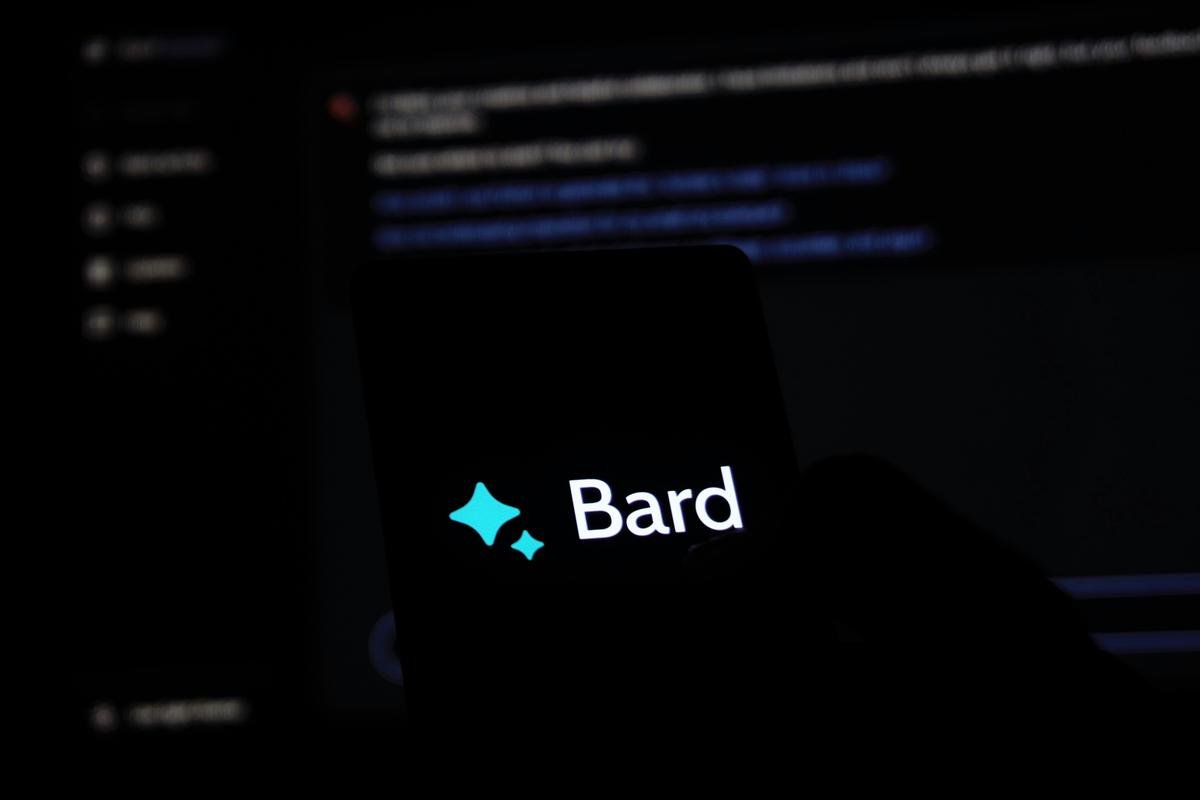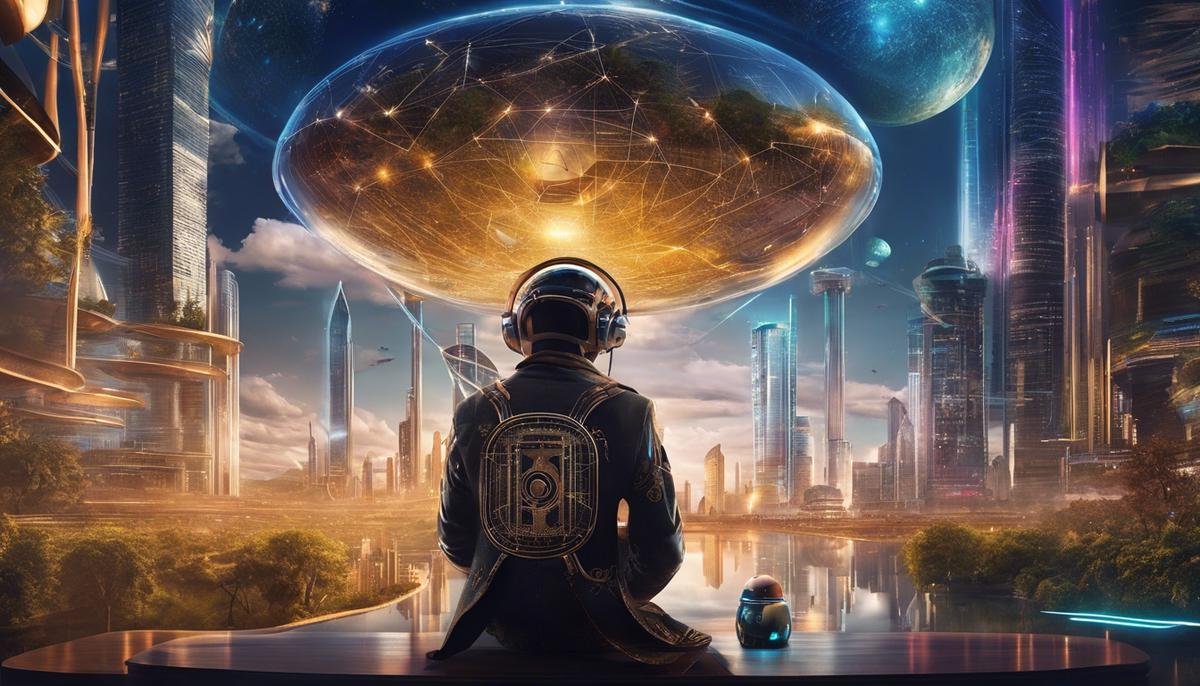In the labyrinthine realm of technological innovation, where artificial intelligence (AI) weaves intricate tapestries of data and algorithms, one name resonates with the poetic echo of history: Bard. Google’s decision to christen its AI ‘Bard’ draws on a venerable legacy, imbuing the platform with the rich resonance of ancient storytellers and custodians of communal knowledge. The moniker ‘Bard’ suggests more than a mere digital assistant; it hints at an entity equipped to not only inform but also inspire, weaving narratives from the vast expanse of human understanding. This essay delves into the heart of what it means for an AI to bear a title so steeped in cultural significance, exploring how the very nature of a bard’s traditional role is reimagined in the digital age through Google’s technological prowess.
Origin and Significance of ‘Bard’
The Inspiration Behind Google’s AI Bard: Embracing the Poetic Side of Tech
In the realms of technology and artificial intelligence (AI), innovation often draws from a well of creativity that finds unlikely allies in the arts. Google’s decision to name their latest AI project ‘Bard’ is not just a fanciful choice but a nod to the fusion of humanistic wisdom with cutting-edge technology. But what’s in a name, especially when it’s tied to the future of AI? Let’s unpack the inspirational layers behind Google’s AI, Bard, and see how a name reflects the ambition to blend the poetic past with the algorithmic future.
The term ‘Bard’ harks back to a time when storytellers and poets, revered in their communities, were the chief entertainers, historians, and the custodians of culture. The most iconic bard in Western history is none other than William Shakespeare, whose works continue to influence and resonate hundreds of years after his time. In naming their AI Bard, Google harnesses this rich historical connotation to position their AI as more than a cluster of algorithms but as a digital storyteller capable of weaving narratives and sharing knowledge with the eloquence of a human bard.
Bard’s mission is ambitious: to process and simplify the complexities of the internet’s vast data for users, much like how a classical bard would condense tales of epic battles and royal intrigues into digestible, engaging stories for their audience. By invoking the name of a storied role, Google suggests their AI will democratize information, making it accessible and relatable to anyone seeking knowledge. This connection draws a clear line from the ancient art of storytelling to the modern-day marvels of algorithmic information processing.
Moreover, by channelling the spirit of an archetypal bard, Google infuses their AI with a sense of creativity and emotional intelligence, aiming to bridge the gap between the often cold perception of technology and the warmth of human interaction. It’s a promise of technology working alongside humanity, synthesizing large-scale data into information that enlightens rather than overwhelms.
The choice of the name Bard reveals Google’s penchant for envisioning a future where technology not only solves problems but does so with a touch of humanity. In this future, Bard stands not only as a purveyor of information but as a beacon of a new era where AI melds with the arts to enrich, educate, and inspire. Whether this AI will truly live up to its namesake’s legacy remains to be seen, but the promise is certainly poetic.

Features and Capabilities of Google Bard
Google Bard: The Next Leap in AI
As the tech landscape continually evolves at breakneck speed, Google stands at the forefront, ushering in the next phase of artificial intelligence with its latest innovation – Google Bard. Unlike other AI systems, Google Bard isn’t just about processing information and delivering dry data. Instead, it redefines the way we think about machine intelligence.
One of the key differentiators of Bard is its focus on accessibility. By leveraging language models and natural processing abilities, Bard aims to make complex information simpler to understand. This isn’t about replacing human intellect; it’s about amplifying it. For those who are too busy to deep-dive into exhaustive research or intricate data analysis, Bard is designed to be a game-changer.
Another area where Bard distinguishes itself is in its intuitive understanding of context. Forget the AI systems that can’t differentiate between homophones or struggle with nuance. Bard’s advanced algorithms are crafted to grasp not just the words, but the meaning behind them. This creates a smoother, more human-like interaction between users and the technology, fostering an environment where people can converse with AI as they would with a knowledgeable friend.
Perhaps most impressively, Google Bard harnesses the power of machine learning to continuously improve. It’s not static. With each interaction, it learns, adapts, and becomes more attuned to the user’s specific needs and language quirks. This creates a personalized experience that stands out from other one-size-fits-all AI systems flooding the market.
But where Bard truly shines is in its potential to inspire. By integrating AI into the creative realm, Google Bard is set to support and enhance human creativity rather than simply emulate it. It might help a writer overcome writer’s block, or aid a musician in fleshing out a new composition. The possibilities are as vast as the imagination allows.
In summary, Google Bard steps away from the stereotype of cold, calculating AI systems. With its focus on simplicity, context, personalization, and creativity, Bard encourages a symbiotic relationship between humans and technology, ensuring that the former always leads the way, assisted, not overridden, by the latter. Now, let’s watch as it sets a new standard for AI interactions and creativity, ready to face an era where information isn’t just consumed, but also beautifully wrought.

Photo by iammottakin on Unsplash
Impact and Applications of Bard in Technology
As tech enthusiasts, we’re always on the lookout for the next game-changer in AI, and Google’s Bard might just be it. Let’s dive into what makes Google Bard not just another AI, but a platform that could redefine our daily tech interactions.
1. Introduction to Google Bard – a new leap in AI
Google Bard represents a giant stride in the AI domain, marking a shift from the robotic and formulaic to an AI that’s fluid, more human-like. By harnessing advanced AI algorithms, Bard has the potential to become your go-to digital assistant, transcending the limitations of previous tech.
2. Focus on accessibility and simplifying complex information
In a sea of relentless data, Bard’s key objective is to make complexity a thing of the past. Its mission: to serve up even the most intricate concepts in bite-sized, easily digestible pieces. This spells the end for slogging through dense information.
3. Intuitive understanding of context and nuanced language
Ever struggled with a digital assistant’s literal interpretations? With Bard’s advanced natural language processing, expect a deep understanding of context and subtleties in language. This means less “Sorry, I didn’t get that” and more meaningful interactions.
4. Continuous improvement through machine learning
Bard isn’t just smart; it’s a learner. It gets better with every interaction, thanks to relentless machine learning. This ensures a consistently evolving AI assistant that adapts to individual user needs and preferences.
5. Integration of AI into the creative realm
The fusion of AI and creativity opens up unprecedented avenues. Imagine an AI that suggests chord progressions for your next song or provides a plot twist for your novel. Bard is poised to be that creative collaborator you didn’t know you needed.
6. Supporting and enhancing human creativity
Far from replacing human ingenuity, Bard aims to amplify it. Providing inspiration and new perspectives, it’s about enhancing the creative process, offering tools that spark innovation and boost productivity.
7. Symbiotic relationship between humans and technology
Gone are the days of technology being a mere tool; Bard envisions a future where humans and AI work in concert. It’s not just about AI doing tasks but creating a back-and-forth dialogue where each improves the other.
8. Setting a new standard for AI interactions and creativity
Bard is setting the stage for a new paradigm in AI interaction. It’s about creating a space where crisp intelligence meets the warmth of human creativity. The result? A seamless blend of tech and human potential.
With Bard entering the scene, the age of human-centered AI has arrived. Get ready to experience technology that not only understands but also enhances the very fabric of our lives. It’s a future where the line between the digital and the human increasingly blurs, and that’s an exciting place to be.

Challenges and Ethical Considerations
Navigating the Ethical Terrain of Google Bard’s Emergence
As Google Bard revolutionizes the AI landscape, the implications of such cutting-edge technology extend well beyond its capabilities. With its deployment come significant ethical challenges that warrant serious consideration. Ethical considerations are not just an afterthought; they’re integral to the responsible implementation of any new technology—and Google Bard is no exception.
First, privacy is a foremost concern. Bard’s prowess in processing vast amounts of information raises questions about data security. The AI needs data to learn, but where does this data come from, and how is it being used? Users’ personal information must be fiercely protected to prevent misuse. Transparency in data handling processes is critical as missteps could lead to damaging breaches of trust.
Bias in machine learning algorithms is another ethical hurdle. Bard is built by humans who have their own inherent biases, which can inadvertently be passed on to AI systems. Google must ensure that Bard is not perpetuating stereotypes or displaying prejudiced behavior, and that requires auditability and corrective measures in the AI training process.
Additionally, with Bard stepping into the creative sphere, intellectual property rights come under scrutiny. Can an AI create genuine art, and if so, who owns it? This leads to a broader discussion of the value we place on human versus AI-generated content and the potential diminishing of traditional creative roles.
The issue of accountability also cannot be ignored. When Bard provides advice or information that leads to real-world actions and consequences, who is responsible? Clear guidelines and accountability structures must be in place to address the resultant outcomes from interactions with AI.
Moreover, the displacement of jobs by AI is a significant ethical debate. As AI like Bard takes on more complex tasks, industries must adapt, and workers may need to re-skill. The transition should be addressed with care, ensuring opportunities for those affected by the technological shift.
Lastly, the control and direction of AI development requires ethical forethought. While Bard represents a collaborative future between technology and humanity, the decision-making power behind its use and growth carries immense responsibility. The potential for AI to shape societal norms and influence decisions means that stakeholders must engage in sustained ethical reflection.
In conclusion, with the deployment of Google Bard come multifaceted ethical challenges that demand attention. From privacy to bias, intellectual property, accountability, job displacement, and control over AI’s trajectory, solutions must be crafted with the highest level of integrity to ensure that Bard serves humanity positively, ethically, and responsibly. Addressing these issues is not just prudent; it’s imperative to the sustainable evolution of AI and its harmonious coexistence with society.

As we stand at the crossroads of an increasingly connected and automated future, Google Bard emerges as both a beacon and a harbinger. It encompasses the power to transform our interactions with the digital world, redefining the boundaries of what technology can achieve while also prompting us to ponder the path ahead. Exploring Bard’s features and capabilities, its potential impacts and applications, and the challenges it invites, we’ve glimpsed into the fusion of art and science that shapes tomorrow. Now, as we map the terrain of this brave new world, it is incumbent upon us to ensure that the journey forth honors the essence of the name Bard—a pursuit of knowledge and an ode to the human spirit that endures through the medium of our creation.




